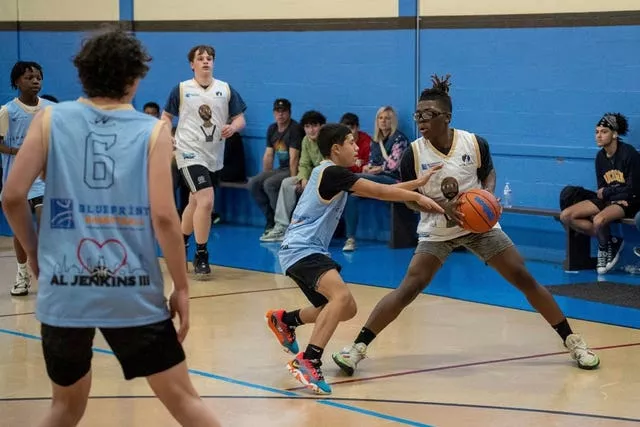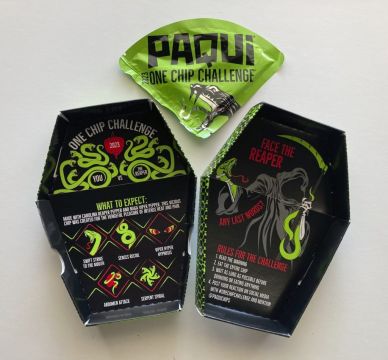The maker of an extremely spicy tortilla chip has said it is working to remove the product from US stores as authorities investigate the death of a teenager whose family have pointed to the One Chip Challenge popularised on social media as a contributing factor.
The cause of Harris Wolobah’s death in Massachusetts on September 1 has yet to be determined and a post-mortem examination is pending, but the 14-year-old’s family have blamed the challenge.
Since the boy’s death, Texas-based manufacturer Paqui has asked retailers to stop selling the individually wrapped chips, a step the 7-Eleven chain has already taken.
A vigil for the teenager has been planned for Friday evening at a park in Worcester in central Massachusetts.
The One Chip Challenge chip sells for about $10 and comes wrapped in a sealed foil pouch enclosed in a coffin-shaped cardboard box.

The package warns the chip is made for the “vengeful pleasure of intense heat and pain”, is intended for adults and should be kept out of reach of children.
Paqui, a subsidiary of The Hershey Company, said in a statement posted on its website Thursday that it was “deeply saddened by the death” of Harris.
“We have seen an increase in teens and other individuals not heeding these warnings,” the company said.
“As a result, while the product continues to adhere to food safety standards, out of abundance of caution, we are actively working with retailers to remove the product from shelves.”
Authorities in Massachusetts also have responded by warning parents about the challenge, which is popular on social media sites such as TikTok.
Scores of people, including children, post videos of themselves unwrapping the packaging, eating the spicy chips and then reacting to the heat. Some videos show people gagging, coughing and begging for water.
“We urge parents to discuss this with their children and advise them not to partake in this activity,” Worcester County district attorney Joseph Early said in a series of posts about the challenge on the social network X, formerly known as Twitter.

“The company warnings state the chips are intended for adult consumption. Other states across the country have seen hospitalisations due to the chip challenge, including teens.”
There have been reports from around America of people who have become sick after taking part in the challenge, including three students from a California high school who were sent to hospital.
Paramedics were called to a Minnesota school last year when seven students fell ill after taking part in the challenge.
Dr Lauren Rice, the chief of paediatric emergency medicine at Tufts Medical Centre in Boston, said: “You can have very mild symptoms like burning or tingling of the lips in the mouth, but you can also have more severe symptoms.”
She noted this is an opportunity for parents, coaches, teachers to learn about the various social media challenges out there that could pose dangers.

“This goes back to the ingredients that are used with the tortilla chip,” she continued.
“There are some spices like capsaicin, which is a chemical ingredient that we use in things like pepper spray and so they are very strong chemicals and they can be very irritating. Some of the more severe symptoms that we see can be things like significant abdominal pain or nausea and vomiting.”
Family and friends of Harris believe the chips caused his death and his family called for them to be banned from store shelves.
“The chip is responsible in our eyes for whatever took place because he was a healthy kid,” said Douglas Hill, who runs the basketball league Harris played in and described him as a quiet teenager whose family came to the US from Liberia.
“The conversation now is about the chip, but there will be other challenges coming and we want to make sure children know they shouldn’t be participating in anything that could put them in harm’s way,” said Mr Hill, who organised a basketball event Saturday to honour the teen.
In addition to its name, One Chip Challenge, the package lays out the challenge rules, which encourage the buyer to eat the entire chip, “wait as long as possible before drinking or eating anything” and post their reaction on social media.
The packaging also asks how long the individual can last, on a scale from one minute to one hour.
The back of the package warns buyers not to eat the chip if they are “sensitive to spicy foods, allergic to peppers, night shades or capsaicin or are pregnant or have any medical conditions”.
The warning adds that individuals should wash their hands after touching the chip and “seek medical assistance should you experience difficulty breathing, fainting or extended nausea”.







